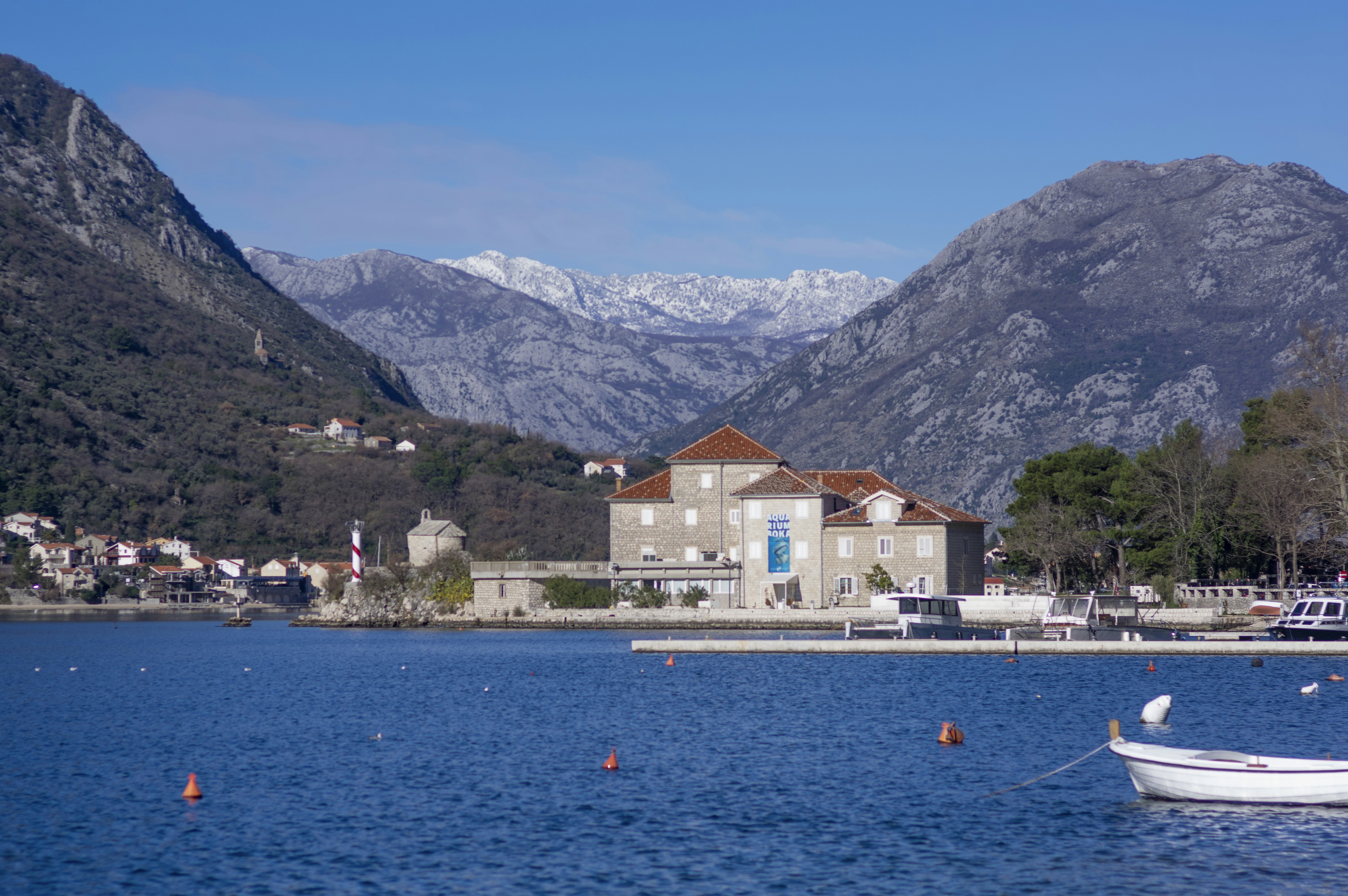Imagine finishing a grueling workout, pushing your body to its limits, and then stepping into an icy pool of water. Sounds intimidating, right? Surprisingly, cold plunges have become a key component of many elite athlete recovery plans. Not only do these chilly immersions help to alleviate muscle soreness and inflammation, but they also promote faster recovery, increased circulation, and mental rejuvenation. In this article, we will explore why cold plunges have become a go-to method for athletes looking to optimize their performance and overcome the physical demands of training at the highest level. Get ready to take a deep breath and dive into the world of cold plunges!
The Benefits of Cold Plunges
Improved Muscle Recovery
One of the main benefits of cold plunges is improved muscle recovery. After intense physical activity, muscles can become fatigued and damaged. Cold plunges help to accelerate the recovery process by reducing inflammation and swelling, and promoting faster healing. Immersing your body in cold water helps to constrict the blood vessels, which can reduce pain and inflammation in the muscles. This allows your body to recover more quickly, so you can get back to training at your full potential.
Reduced Inflammation and Swelling
Inflammation and swelling are natural responses to tissue damage and stress on the body. However, excessive inflammation can hinder the recovery process and lead to prolonged muscle soreness. Cold plunges can help to reduce inflammation and swelling by constricting the blood vessels and decreasing blood flow to the affected areas. This can alleviate discomfort and promote faster healing, allowing you to bounce back from intense physical activity more quickly.
Relief from Muscle Soreness
Muscle soreness, also known as delayed onset muscle soreness (DOMS), is a common result of intense exercise. Cold plunges can provide relief from muscle soreness by numbing the nerve endings and reducing pain signals in the muscles. The cold water also helps to flush out metabolic waste products that contribute to muscle soreness. By incorporating cold plunges into your recovery routine, you can minimize the duration and intensity of muscle soreness, allowing for faster recovery and improved performance.
The Science Behind Cold Plunges
Cold Therapy and Thermogenesis
Cold plunges involve exposing the body to extremely cold temperatures for a short period of time. This exposure triggers a response known as thermogenesis, which is the body’s natural process of producing heat to maintain its core temperature. During thermogenesis, the body burns calories to generate heat, which can have a beneficial effect on muscle recovery. Cold therapy stimulates the body’s metabolic rate, promoting increased calorie expenditure and potentially aiding in weight loss and muscle toning.
Activation of the Parasympathetic Nervous System
Cold plunges also activate the parasympathetic nervous system, which is responsible for the body’s rest and digest functions. When the body is subjected to cold temperatures, the parasympathetic nervous system is triggered, leading to a relaxation response. This response helps to decrease stress and anxiety, allowing the body to enter a state of deep relaxation and recovery. By incorporating cold plunges into your recovery routine, you can enhance your body’s ability to rest and recuperate, leading to improved overall well-being.
Increased Blood Circulation
Cold plunges promote increased blood circulation throughout the body. When the body is exposed to cold temperatures, the blood vessels constrict, which causes blood to be redirected to the vital organs. Once you exit the cold plunge, the blood vessels dilate, allowing fresh oxygenated blood to flow back to the muscles and tissues. This increased blood circulation helps to deliver essential nutrients and oxygen to the muscles, facilitating faster recovery and reducing the risk of injury.
Cold Plunges vs. Ice Baths
Temperature and Duration
Cold plunges and ice baths are both effective recovery techniques, but there are some key differences between the two. Cold plunges generally involve immersing the body in water with temperatures ranging from 50 to 60 degrees Fahrenheit, whereas ice baths involve submerging the body in water that is around 40 degrees Fahrenheit or lower. The duration of cold plunges and ice baths also varies, with cold plunges typically lasting for a shorter period of time, usually around 5 to 10 minutes, while ice baths can last anywhere from 10 to 20 minutes.
Immersion vs. Surface Cooling
Another difference between cold plunges and ice baths is the type of cooling they provide. In a cold plunge, the entire body is immersed in cold water, allowing for deep tissue cooling. This can be particularly beneficial for larger muscle groups and joints. On the other hand, ice baths primarily provide surface cooling, as the cold water surrounds the body without complete immersion. While both methods can be effective for reducing inflammation and promoting recovery, the immersion provided by cold plunges may offer more comprehensive benefits.
Easier Accessibility and Maintenance
When it comes to accessibility and maintenance, cold plunges have an advantage over ice baths. Cold plunges can be easily set up and maintained with a cold plunge container that can be installed in a gym, home, or training facility. They require less space and equipment compared to ice baths, which may require larger tubs or pools filled with ice. Additionally, cold plunge containers can be adjusted to maintain a consistent temperature, providing a more controlled and reliable cold therapy experience.
Implementing Cold Plunges in Recovery Plans
Integrating Cold Plunges into Training Routines
To effectively incorporate cold plunges into your recovery plan, it’s important to integrate them into your training routines. Schedule regular cold plunge sessions after intense workouts or competitions to maximize their benefits. Consider making cold plunges a part of your cool-down routine to help your muscles recover and reduce post-exercise inflammation. By consistently including cold plunges in your training regimen, you can optimize your recovery and enhance your overall performance.
Frequency and Timing of Cold Plunges
Finding the right frequency and timing for cold plunges is crucial for optimal recovery. It is generally recommended to start with one to two cold plunge sessions per week and then adjust based on your individual needs and response. Some athletes may benefit from more frequent cold plunges, while others may require less. Experiment with different timings, such as immediately after a workout or later in the day, to determine what works best for you. Listen to your body and pay attention to how you feel after each session to find the right balance.
Adjusting for Individual Athlete Needs
Each athlete has unique recovery needs, so it’s important to adjust cold plunge protocols accordingly. Factors such as age, fitness level, and the nature of the training or competition should be taken into account. Elite athletes may benefit from more intense or longer cold plunge sessions, while those who are new to cold therapy may require shorter durations or gentler temperature ranges. Consulting with a sports medicine professional or expert can help you tailor your cold plunge routine to best meet your individual needs.
Case Studies: Elite Athletes and Cold Plunge Success
Professional Football Player: Enhanced Performance and Decreased Injury Risk
One case study involved a professional football player who incorporated cold plunges into his recovery plan. After implementing regular cold plunge sessions, the player reported enhanced performance on the field and a decreased risk of injuries. The cold plunges helped him recover more quickly from intense training sessions and games, allowing him to maintain a high level of performance throughout the season. The reduced inflammation and improved muscle recovery provided by cold plunges contributed to his overall success and longevity in the sport.
Olympic Swimmer: Improved Muscle Recovery and Reduced Fatigue
An Olympic swimmer also experienced significant benefits from incorporating cold plunges into her recovery routine. The swimmer reported improved muscle recovery and reduced post-workout fatigue after implementing regular cold plunge sessions. The cold water immersion helped to alleviate muscle soreness and inflammation, allowing her to train at a higher intensity with shorter recovery periods. This contributed to her overall performance improvement and success in competitive swimming.
Long-Distance Runner: Minimized Delayed Onset Muscle Soreness
A case study involving a long-distance runner showed that regular cold plunges minimized delayed onset muscle soreness (DOMS) and allowed for faster muscle recovery. The runner reported feeling significantly less muscle soreness after incorporating cold plunges into her recovery plan. By reducing inflammation and promoting faster healing, the cold plunges enabled her to consistently train at a high volume without being hindered by excessive soreness. This contributed to her ability to recover more quickly between training sessions and ultimately improved her race performance.
Safety Considerations and Precautions
Gradual Exposure and Acclimation
When starting cold plunge therapy, it’s important to gradually expose your body to the cold temperatures in order to acclimate to the sensation. Start with shorter durations and slightly higher water temperatures, then gradually decrease the temperature and increase the duration over time. This gradual exposure allows your body to adapt to the cold and reduces the risk of shock or hypothermia. If at any point you feel uncomfortable or experience severe reactions, such as dizziness or difficulty breathing, exit the cold plunge immediately and consult with a medical professional.
Monitoring Body Temperature and Reaction to Cold
It is crucial to monitor your body temperature and reaction to the cold during a cold plunge session. Keep track of how your body feels and be aware of any signs of prolonged or excessive cold exposure. If you start shivering uncontrollably or experience numbness or tingling in extremities, it may be a sign that your body is cooling too rapidly. Exit the cold plunge promptly and warm up slowly. It’s also important to have a thermometer on hand to monitor the water temperature and ensure it remains within a safe range.
Avoiding Cold Plunges with Specific Conditions
While cold plunges can be beneficial for many athletes, there are certain conditions in which they should be avoided. Individuals with cardiovascular problems, Raynaud’s disease, asthma, or a history of frostbite should consult with a healthcare professional before attempting cold plunge therapy. Additionally, pregnant women and individuals with open wounds or infections should avoid cold plunges to prevent any potential complications. Always prioritize your safety and consult with a medical professional if you have any concerns or pre-existing conditions.
Alternative Cold Plunge Methods
Cryotherapy Chambers
In addition to traditional cold plunges, cryotherapy chambers offer an alternative method of cold therapy. Cryotherapy chambers involve standing in a chamber filled with cooled air, usually around -200 to -240 degrees Fahrenheit, for a short period of time, typically around 2 to 3 minutes. While cryotherapy chambers can be effective for whole-body cooling, they may not offer the deep tissue benefits provided by cold plunges. However, they can be a suitable alternative for those who prefer a less immersive cold therapy experience.
Ice Baths and Cold Showers
Ice baths and cold showers are other methods of cold therapy that can be incorporated into recovery plans. Ice baths involve submerging the body in cold water, usually with the addition of ice, for a specific duration. They provide similar benefits to cold plunges, but may require more space and maintenance. Cold showers, on the other hand, involve taking a regular shower with cold water, which can provide a quick and accessible way to reap the benefits of cold therapy. While these methods may not offer the precise temperature control or deep tissue benefits of cold plunges, they can be effective additions to a recovery routine.
Outdoor Cold Water Immersion
Another alternative method of cold therapy is outdoor cold water immersion. This involves subjecting your body to naturally cold water sources such as lakes, rivers, or the ocean. Outdoor cold water immersion can offer a unique experience and can be particularly beneficial for athletes who enjoy outdoor activities. However, it’s important to exercise caution and ensure that the water temperature is safe before immersing yourself. It’s also advisable to have a support person nearby and to follow safety guidelines for outdoor water activities.
Expert Insights and Recommendations
Advice from Sports Medicine Professionals
Sports medicine professionals emphasize the importance of cold plunges as a valuable tool in recovery plans for elite athletes. They highlight the benefits of reduced inflammation, improved muscle recovery, and enhanced overall performance. These professionals recommend carefully integrating cold plunges into training routines and adjusting protocols based on individual needs and responses. They also stress the importance of gradually acclimating to cold temperatures and monitoring body temperature and reactions during cold plunge sessions.
Tips from Elite Athletes
Elite athletes who have experienced the benefits of cold plunges also have valuable insights and recommendations. They emphasize the need to listen to your body and find the right balance and timing for cold plunge sessions. Many athletes recommend incorporating cold plunges into both pre-workout warm-ups and post-workout cool-downs to optimize performance and recovery. They also highlight the importance of consistency and incorporating cold plunge therapy as a regular part of their training and recovery routine.
Importance of Individualized Approach
Both sports medicine professionals and elite athletes stress the importance of an individualized approach to cold plunge therapy. Each athlete’s recovery needs and responses are unique, and protocols should be tailored accordingly. It’s crucial to consider factors such as age, fitness level, and training intensity when implementing cold plunge sessions. Whether it’s adjusting the temperature, duration, or frequency, taking an individualized approach can ensure that athletes receive the maximum benefits from cold plunges while minimizing the risk of adverse reactions.

Practical Tips for Cold Plunge Setup and Maintenance
Choosing an Appropriate Cold Plunge Container
When setting up a cold plunge, it’s important to choose a container that is appropriate for your needs and space. Options for cold plunge containers include pre-fabricated units, custom-built containers, or converted cold plunge tanks. Consider factors such as size, insulation, and portability when selecting a container. It’s also advisable to consult with a professional or experienced cold plunge provider to ensure that you choose the right container for your goals and preferences.
Ensuring Proper Water Temperature and Maintenance
Maintaining the appropriate water temperature is crucial for an effective cold plunge session. Invest in a high-quality temperature control system that allows you to maintain a consistent temperature within the desired range. Regularly monitor and adjust the water temperature to ensure that it aligns with your preferences and recovery goals. It’s also essential to properly maintain the cold plunge container, including cleaning and sanitizing the water to prevent any bacterial or fungal growth. Regular maintenance will ensure a safe and hygienic cold plunge experience.
Adding Extras: Aromatherapy, Hydrotherapy, and Contrast Therapy
To further enhance your cold plunge experience, consider adding extras such as aromatherapy, hydrotherapy, or contrast therapy. Aromatherapy involves incorporating scents into the cold plunge session, which can help promote relaxation and reduce stress. Hydrotherapy includes the use of water jets or currents within the cold plunge container, which can provide a massage-like effect and further improve blood circulation. Contrast therapy involves alternating between cold plunges and warm water immersion to further enhance the benefits of recovery. Experimenting with these extras can make your cold plunge sessions even more enjoyable and effective.
Conclusion
Cold plunges have proven to be a valuable tool in the recovery plans of elite athletes. The benefits of improved muscle recovery, reduced inflammation, and relief from muscle soreness make cold plunges a must-have component of any athlete’s recovery routine. The science behind cold plunges, including cold therapy and thermogenesis, activation of the parasympathetic nervous system, and increased blood circulation, further supports their efficacy in promoting faster recovery and improved overall performance.
While cold plunges and ice baths offer similar benefits, cold plunges have the advantage of being more accessible and easier to maintain. By integrating cold plunges into training routines, adjusting the frequency and timing, and tailoring protocols to individual athlete needs, the full potential of cold plunges can be realized. Case studies involving elite athletes have shown significant success in performance enhancement, decreased injury risk, improved muscle recovery, and minimized muscle soreness.
However, it’s important to prioritize safety when engaging in cold plunge therapy. Gradual exposure and acclimation, monitoring body temperature and reactions, and understanding the contraindications are essential for a safe and effective cold plunge experience. It’s also worth exploring alternative cold plunge methods such as cryotherapy chambers, ice baths, cold showers, or outdoor cold water immersion to find the most suitable option.
Expert insights and recommendations from sports medicine professionals and elite athletes further emphasize the value of a personalized approach to cold plunge therapy. By taking into account individual needs, responses, and preferences, athletes can optimize their recovery and performance outcomes. Practical tips for cold plunge setup and maintenance, such as choosing the right container, maintaining proper water temperature, and adding extras like aromatherapy and hydrotherapy, can further enhance the overall cold plunge experience.
In conclusion, cold plunges are a key component of elite athlete recovery plans. Integration of cold plunges into recovery programs can lead to improved muscle recovery, reduced inflammation, and enhanced overall performance. By harnessing the science behind cold therapy, understanding the benefits of activating the parasympathetic nervous system and increasing blood circulation, athletes can make the most out of their cold plunge sessions. With careful attention to safety considerations and a personalized approach, cold plunges can be a game-changer in elite athlete recovery.





